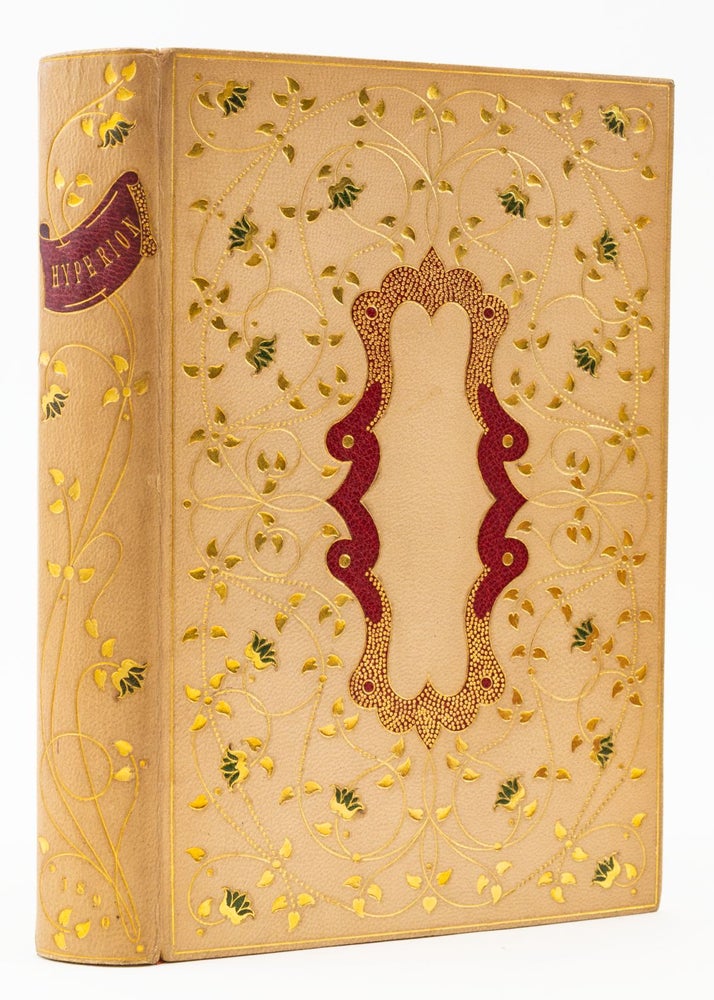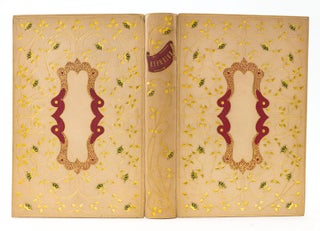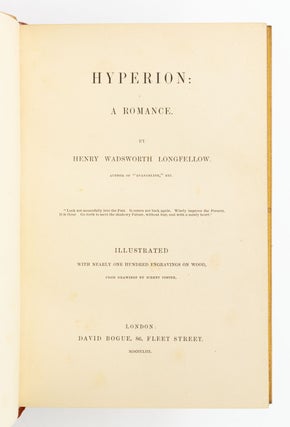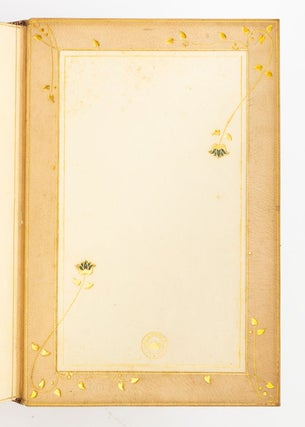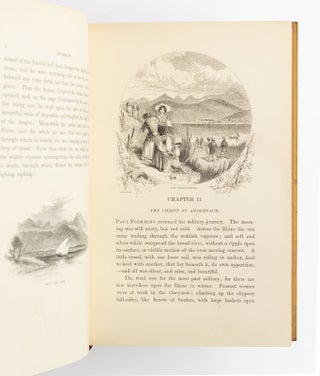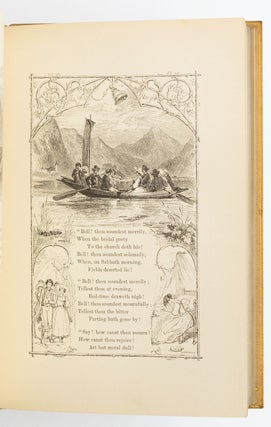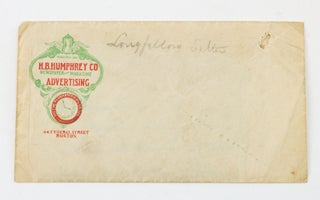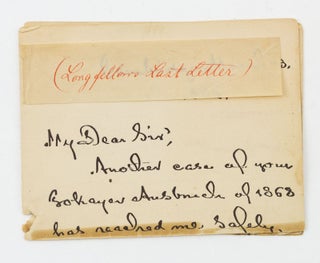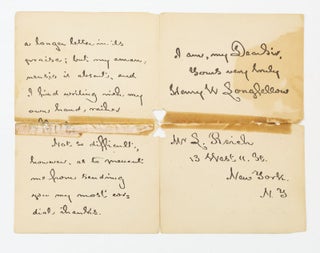HYPERION.
(London: David Bogue, 1853). 205 x 135 mm. (8 x 5 1/4"). xii, [2], 304 pp. FIRST EDITION.
ANIMATED CREAM-COLORED MOROCCO, INLAID AND GILT, BY THE HAMPSTEAD BINDERY (stamp-signed on front turn-in), covers with inlaid crimson morocco arabesque at center tooled with gilt circles and stippling surrounded by swirling gilt vines with inlaid green morocco flowers, smooth spine tooled with similar vines and with inlaid red morocco title banner, VELLUM DOUBLURES and endleaves framed with gilt tendrils that extend two inlaid green morocco flowers onto the doublures, all edges gilt. With nearly one hundred engravings on wood, from drawings by Birket Foster. Rear doublure with small gilt stamp of a coronet surrounded by a collar containing the word "Londonderry." ◆Spine slightly and evenly darkened, a breath of rubbing to extremities, but A FINE COPY, clean, fresh, and bright inside and out.
Longfellow's earliest literary success appears here in an elegant binding from Frank Karslake's Hampstead Bindery, almost certainly done during the bindery's earliest days, when it employed arguably the most talented artisans who would ever work there. It is a beautiful example of a vigorously decorated binding--with its splashes of green and red supported by swirling gilt--but one that is presented with reassuring control and echoed in a much quieter smooth spine. Karslake opened the bindery near his Charing Cross Road bookshop in January of 1898, with high hopes and a strong staff, but the workshop's life was short. The original personnel comprised Alfred de Sauty as chief designer; P. A. Savoldelli, Thomas E. Carey, and Thomas Harrison as finishers; Samuel Tout and Sylvester Byrnes as forwarders; and a Miss Rogers as the sewer. Hampstead acted as an adjunct to the Guild of Women Binders, which Karslake organized later in 1898; he often assigned the (male) professionals at the Hampstead workshop to execute the designs of the Guild's members. He also set up a workroom for the Guild at Hampstead, with training to be provided by the bindery staff, then issued catalogues and staged exhibitions featuring productions from both workshops. Workers at Hampstead began to go elsewhere, perhaps (as Tidcombe speculates) because they had been irritated to have the responsibility for training the women added to their duties, or were upset over having their own craftsmanship attributed to the women's Guild. By 1901, only Savoldelli remained from the original staff; by 1902 even Karslake's son Harold had quit; the bindery was soon shuttered after that. The present binding's charming and unusual design is almost certainly the work of de Sauty (1870-1949), who began his career as a finisher for the esteemed Riviere firm. In addition to creating designs for the Hampstead Bindery, he taught at the London County Council School of Arts and Crafts. He later emigrated, becoming manager of the Extra Bindery at R. R. Donnelley Co. and at Cuneo Bindery in Chicago, and gaining recognition as one of the most accomplished binders at work in the first third of the 20th century. As suggested by the present example, he had a refined imagination for design, in addition to being a binder of enormous technical skill. First published in 1839, the novel "Hyperion" chronicles a young man's wanderings through Europe after being rejected by the woman he loved (a state that happened to coincide with events in the author's own life). It struck a chord with readers--many of whom used it as a kind of guidebook for their own European travels--and advanced Longfellow's writing career. His first book of poetry was published the same year and firmly established his reputation. The gilt stamp on the rear doublure is almost certainly the mark of a previous owner; the coronet suggests that owner may have been the (7th?) Marquess of Londonderry. (ST19092)
Price: $7,000.00

